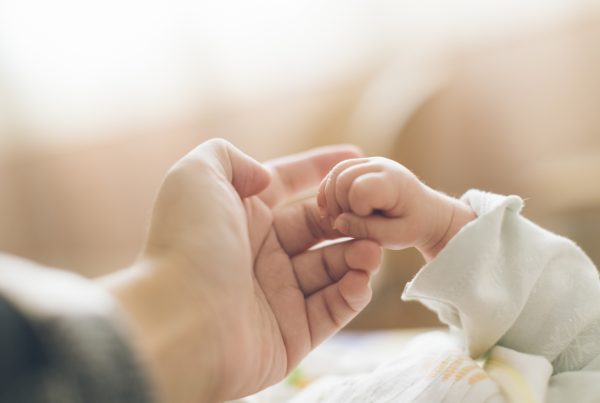Fat loss is challenging enough for any client but, when biology and social factors work against you, it can be even harder, as many mums discover. Rosemary Marchese reports on how you can help your clients escape the Fat Trap of motherhood.
Many mums are stuck in a motherhood Fat Trap – and not all of them want to hear about it. “Tried to lose weight. Success. Put on weight. Tried to lose it again. Put on weight. Continue to put on weight.” Does this cycle ring any bells in relation to mum clients you train?
Not all mums find themselves in this predicament, of course, but a great many do. And although the Fat Trap can happen to anyone, its prevalence in mothers is notable. If you don’t acknowledge it, particularly with mums, you’re on the road to nowhere when it comes to weight loss.
When it comes to the Fat Trap of motherhood, there are two ways to consider the client ‘trapped’. The first is the trap within their mind: the obsession with the scales that means they will do whatever it takes to lose weight the quickest way. The quickest way, unfortunately, is often the unhealthy option of not eating much, which does them no good at all, and in fact may well make them fatter on the inside as the visceral fat levels go up while their weight temporarily goes down.
The second trap is the physical trap. Why on earth can’t they lose the weight and keep it off? Why is it so hard? Inevitably, most mum clients will have tried to lose weight before coming to see you for help. It’s not easy for her to be at your training session. Chances are she really “couldn’t be stuffed”, but she’s turned up, so you’d better get things right! But how?
Questioning history
Start by asking some searching questions and go right back to childhood. Did you know that girls are more likely than boys to quit sport in their teenage years? And what seems like too long ago for your client to mention, or for you to ask, is a really important question: did you exercise as a child, and if so, when did you stop and why? Getting to the bottom of this is a tricky task. Most may not even know the answers themselves at first but, for many, study and
socialising are the two reasons for letting physical activity fall by the wayside.
And so begins the Fat Trap of motherhood. At first, they may not have noticed the scales changing but, without doubt, the fat levels will have been climbing. The clothes may have fit for a while, but the visceral fat was developing. Add on some more years, and one or more babies, and it’s no surprise that weight loss becomes a goal that can be harder and harder to achieve. Here’s the key fact: she is unfit. Her focus has been on weight loss and fat loss, when it must instead be on how to improve her fitness.
The vicious regain cycle
There is evidence to show that if your client has successfully lost weight at some point and then put it back on, her body may be in a biologically altered state that favours her regaining weight. Imagine a client approaches you who has lost 10kg but is struggling to lose more. Or she has lost 10kg and put 4kg back on. It’s quite likely that her body is acting as if she is starving. For example, ghrelin, the gastric hormone often dubbed ‘the hunger hormone’, is quite likely to be at higher levels than before weight loss began. Other hormones that suppress hunger, including peptide YY, can also be abnormally low. Low levels of leptin, the hormone that suppresses hunger and increases metabolism, can also be low in these clients. It’s not a very good breeding ground for fat loss, is it?
For years, the general rule of ‘eat less and move more’ for weight loss has been advocated. While this is an overly simple way to look at it and obviously doesn’t work for some clients (due to factors such as genetics), it is applicable to some individuals. To lose weight and keep it off, some people must consume fewer calories and exercise far more than some other people.
We don’t want to deflate clients, especially busy mums who have made space in their hectic lives to train with us, but we do need to be responsible in our explanation of how they are going to lose weight and how hard it may be for them. They need to understand that, if they are stuck in a Fat Trap, they are battling a biological system that is working against their objectives. They need to know that a weight-reduced body behaves differently from a similar-size body that has not dieted.
Muscle biopsies taken before, during and after weight loss have shown that, once a person drops weight, their muscle fibres undergo a transformation, making them more like highly efficient ‘slow-twitch’ muscle fibres. This means that after the client loses weight, the muscles burn 20-25% fewer calories during every-day activity and moderate aerobic exercise than those of a person who is naturally at the same weight.
So, if your ‘dieting’ client thinks she is burning 200 calories during a brisk 30-minute walk, it’s unfortunately more likely that the calorie burn is around 150 to 160 calories. The fact is, weight loss can cause a lot of upheaval in a client’s quest to lose more weight or to lose the weight again and again.
On top of all this, if your client has previously lost weight, their brain will have a greater emotional response to food. Couple this with a body that’s already burning fewer calories and you have a perfect storm for weight regain. Unfortunately, this may persist for years. Although it’s not impossible for mums to achieve and maintain fat loss, you
are not doing your mum clients any favours by failing to let them know how hard the process will be.
Thinking fit, not fat to escape the Fat Trap of motherhood
It’s worth remembering that there is no scientific evidence to say that two people at the same weight will have the same health, and that it is possible to be classified as overweight while still being metabolically healthy. The obsession with the scales, particularly among mums, has interfered with the mindset that will truly help many
people transform their well-being. The mindset should be about improving fitness, not just losing weight.
The Fat Trap of motherhood is a touchy subject and not all mum clients will want to hear about it. But, by addressing the biological hurdles she will face, and by encouraging her to switch her focus to improving her fitness, you will be on track to get both her mind and her body out of the Fat Trap.
This feature is produced in conjunction with Australian Fitness Network.
About the author
Rosemary Marchese is a physiotherapist, nutrition coach and fitness industry adviser with 20 years’ experience. She is the author of The Essential Guide to Fitness and The Fit Busy Mum: Seven habits for success. For lifestyle tips
visit rosemarymarchese.com.au or thefitbusymum.com.au
Where next? Discover why she should lift.







